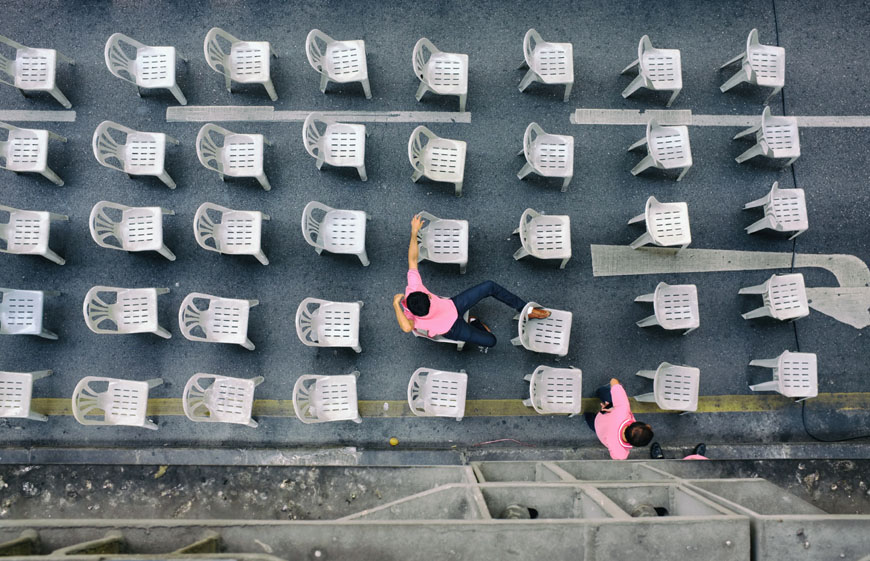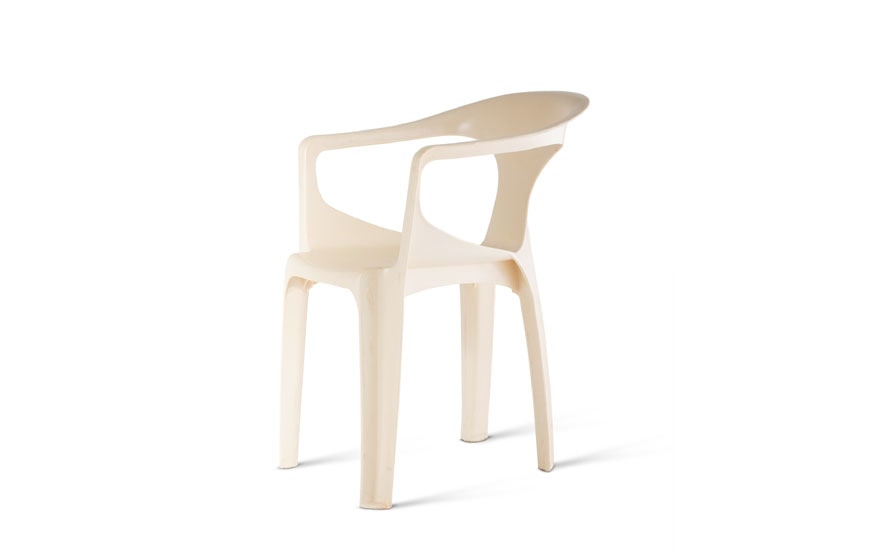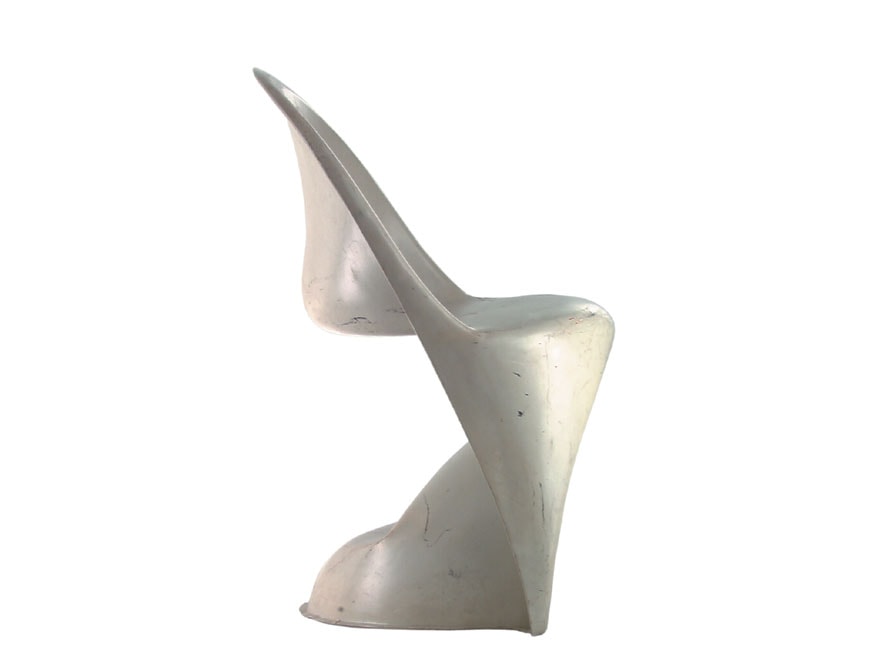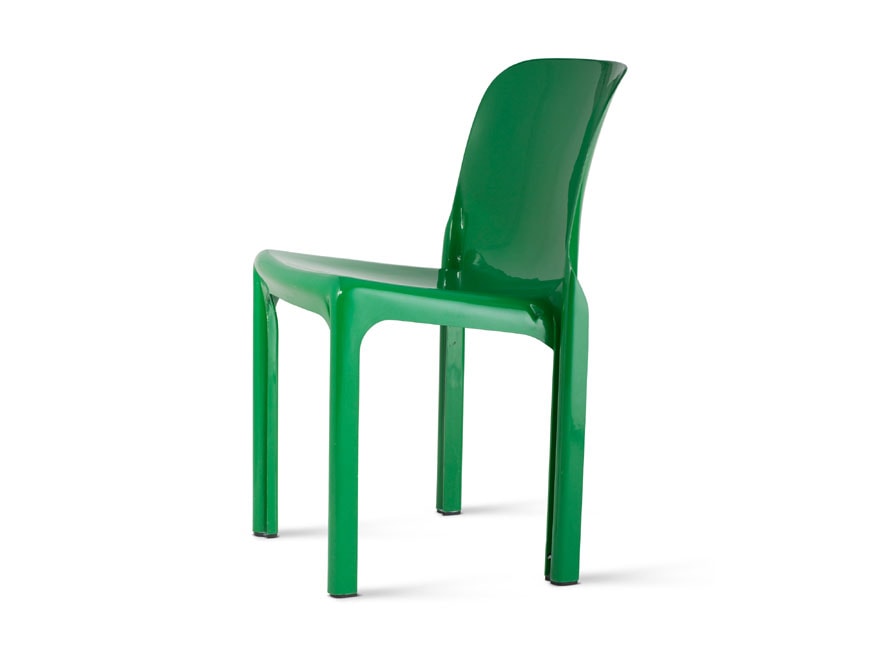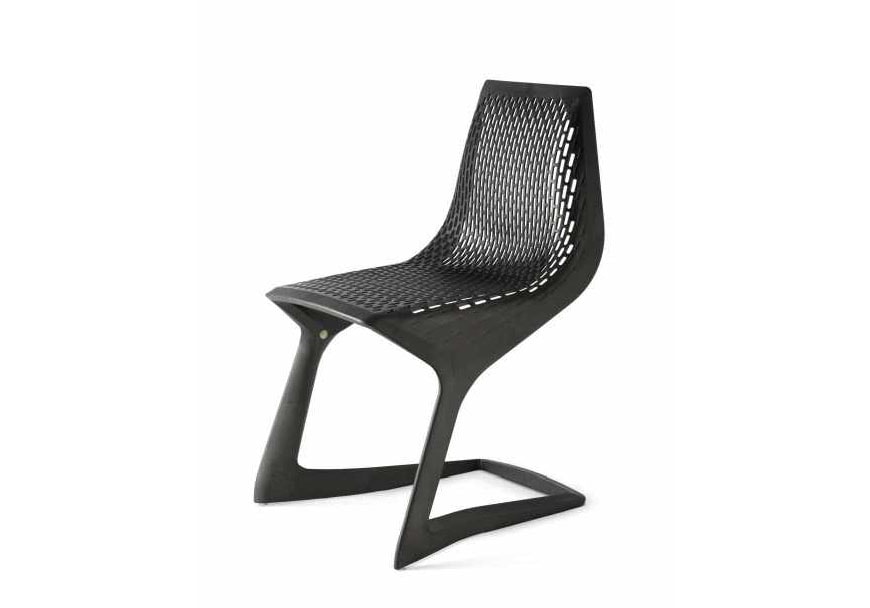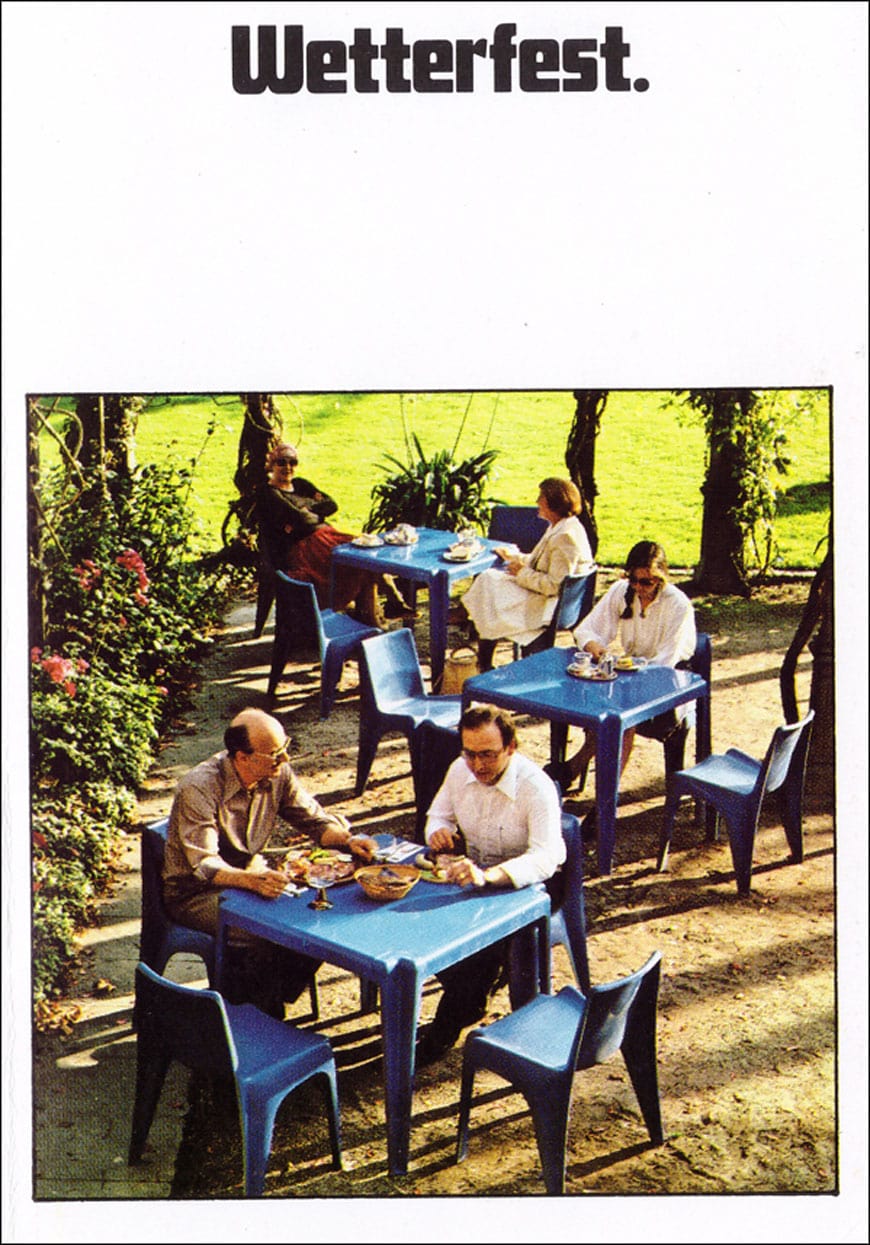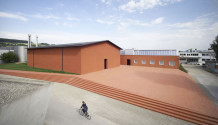The history of Monobloc Plastic Chair on view at Vitra Shaudepot
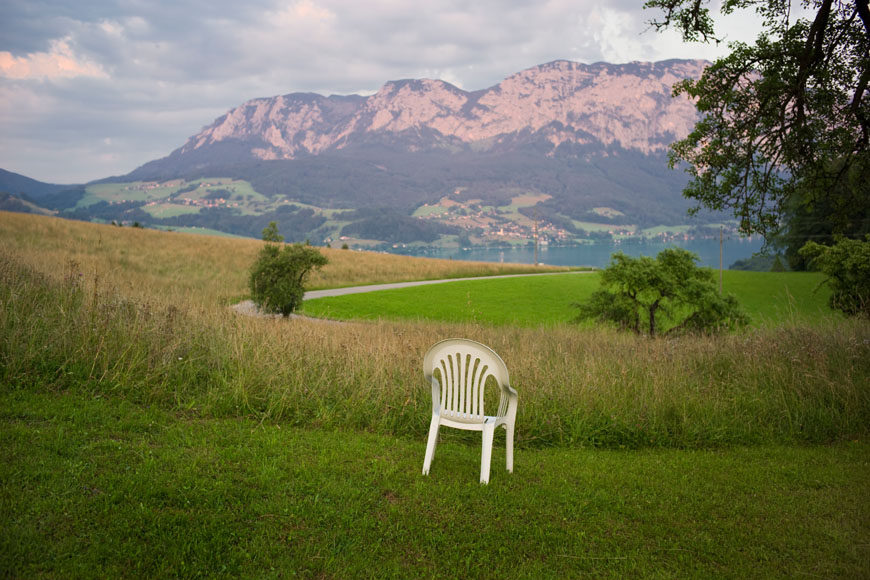
From March 17 through June 18, 2017, the Schaudepot at the Vitra Campus in Weil am Rhein presents the exhibition Monobloc – A Chair for the World, focused on the design of the single-piece chair from the 1920s to the present.
Cover image. Österreich. Photo: Jürgen Lindemann
The single-piece white plastic chair, also called Monobloc, is possibly the epitome of low-cost furniture, an object widely popular across the world – from Europe and America, to Africa and the far-East – for decades.
The first examples of a chair made from a single piece of material date back to the ’20s, when designers tried to built it by folding sheet metal foils or bending plywood panels.
Yet, it wasn’t until the 60s that the introduction of synthetic materials made the mass-production of Monobloc-like chairs possible.
The turning point after which the white plastic chair’s success quickly spread across the entire planet was nevertheless in 1972, when the French designer Henry Massonnet invented the Fauteuil 300, a low-cost piece of furniture which could be manufactured in just 2 minutes, thus dramatically reducing production costs and making industrially-manufactured chairs available to all for few bucks.
40 Monoblocs. Photo: Jürgen Lindemann
Yet, this inexpensive piece of furniture – we all see in cafes, beaches, holiday homes, and public venues all over the planet – also embodies an ambiguous and ambivalent nature. Inexpensive and democratic on one side while non-sustainable and a symbol of global mass consumption on the other.
An ambivalence that has been investigated also by contemporary designers such as Martino Gamper and Martí Guixé.
Through 20 emblematic objects – as well as photographs, technical info, and images -, the exhibition at the Vitra Shaudepot now tells the story of this seminal design, its technical development, and its social role in different cultural contexts (for example, disposable and humble product in Western countries, while in Africa it is often considered a valuable object deserving a careful restoration when broken).
Pieces on view include the Panton Chair (1958-68) by Verner Panton, the Bofinger Chair (1964-68) by Helmut Bätzner, Selene (1961-68) Vico Magistretti, Henry Massonnet’s Fauteuil 300 (1972), the Café Chair (2006) by Fernando and Humberto Campana, the Myto chair by Konstantin_Grcic (2008), Respect Cheap Furniture (2009) by Martí Guixé, and Martino Gamper’s Monothrone (2017) especially designed for this exhibition, among others.
Monobloc – A Chair for the World
March 17 / June 18, 2017
Vitra Schaudepot – Vitra Campus
Weil am Rhein, Germany
Henry Massonnet, Fauteuil 300, 1972. Photo: Jürgen Hans
Verner Panton, Panton Chair, Prototype, 1958-60. Photo: Andreas Sütterlin
Vico Magistretti, Selene, 1961-68; Foto: Jürgen Hans
Helmut Bätzner, BA 1171, Bofinger Chair, 1964-68. Photo: Jürgen Hans
Konstantin Grcic, Myto, 2008
Petrol Station, Iraq, Kurdistan, 2016. Photo: Stephan Pramme
Flyer for Helmut Bätzner’s Bofinger Chair © Bofinger Production, Andreas Barese l Bofinger,
Heilbronn.
Images courtesy of Vitra https://www.vitra.com/en-it/home
copyright Inexhibit 2024 - ISSN: 2283-5474

